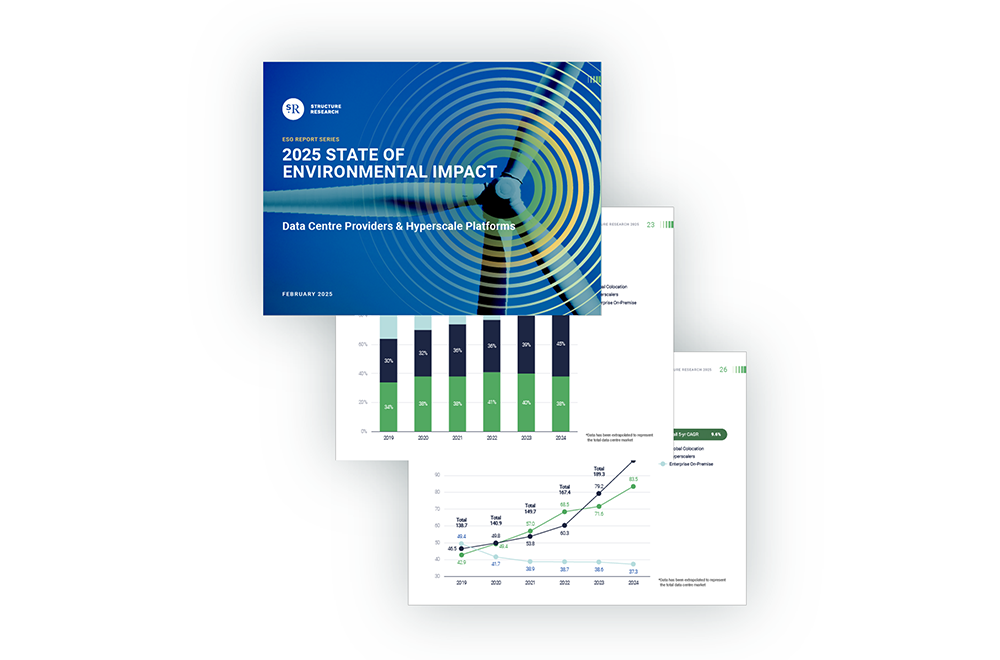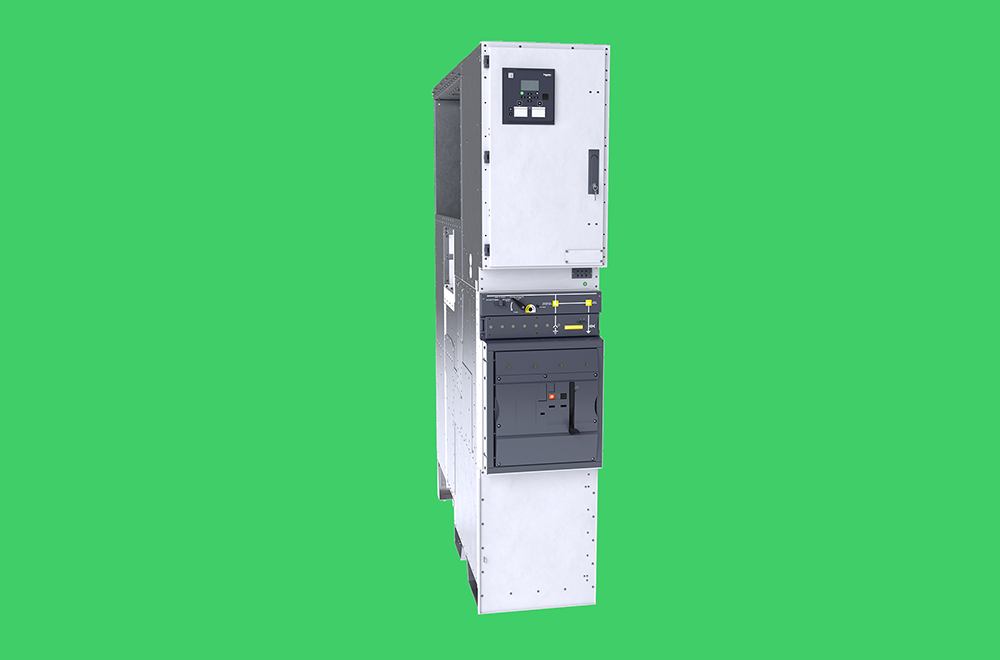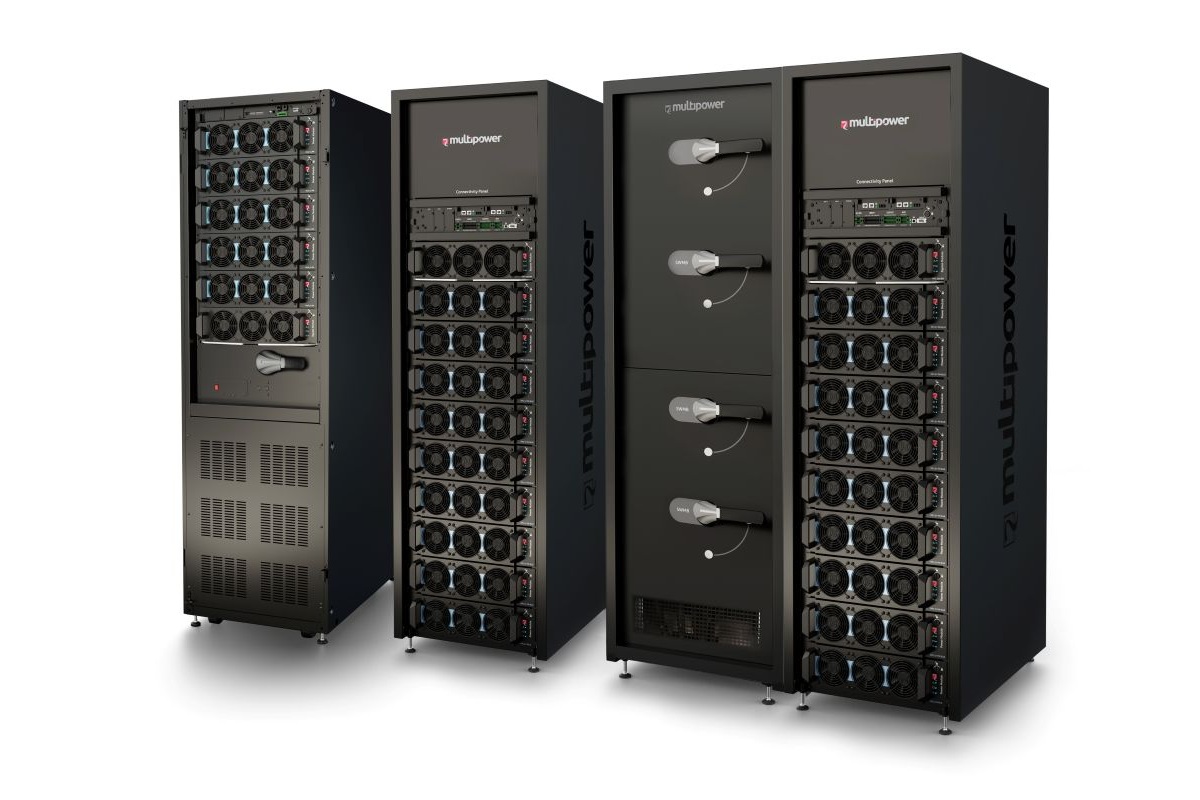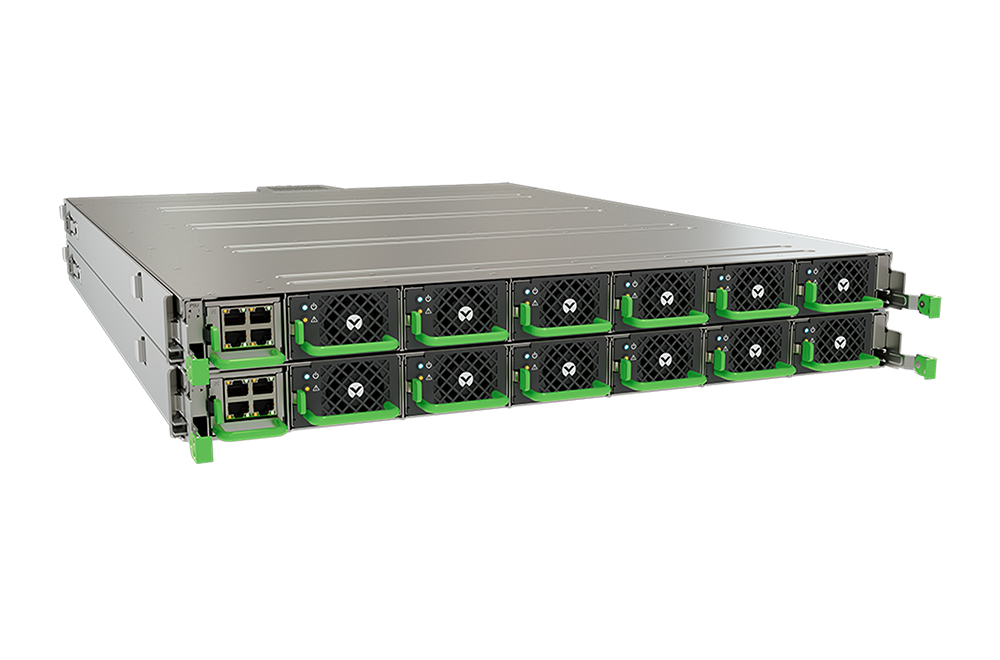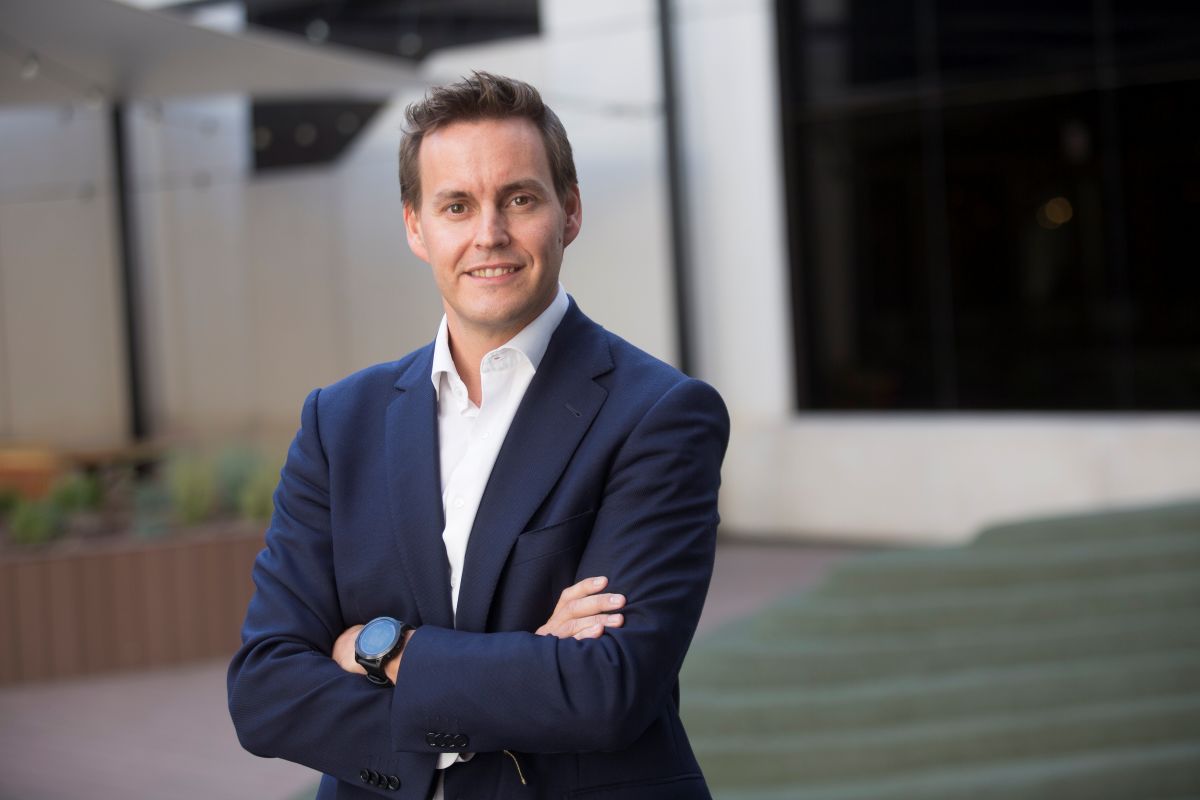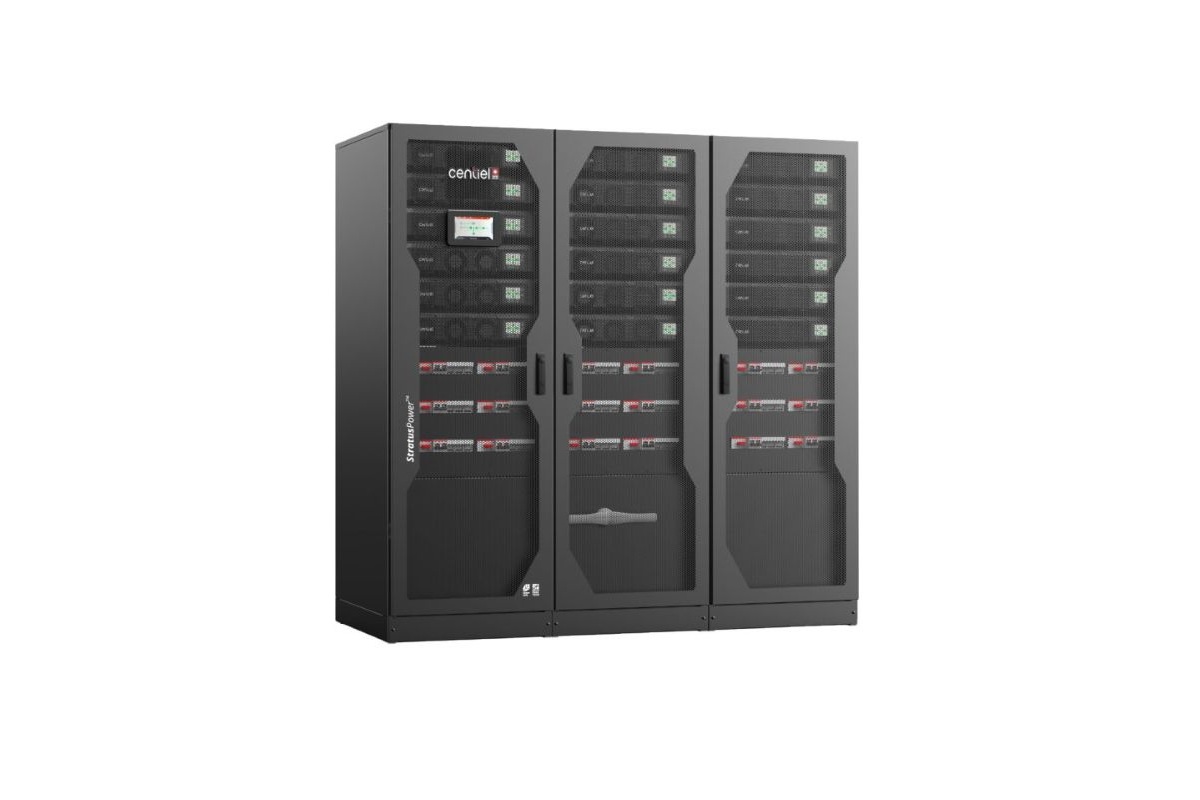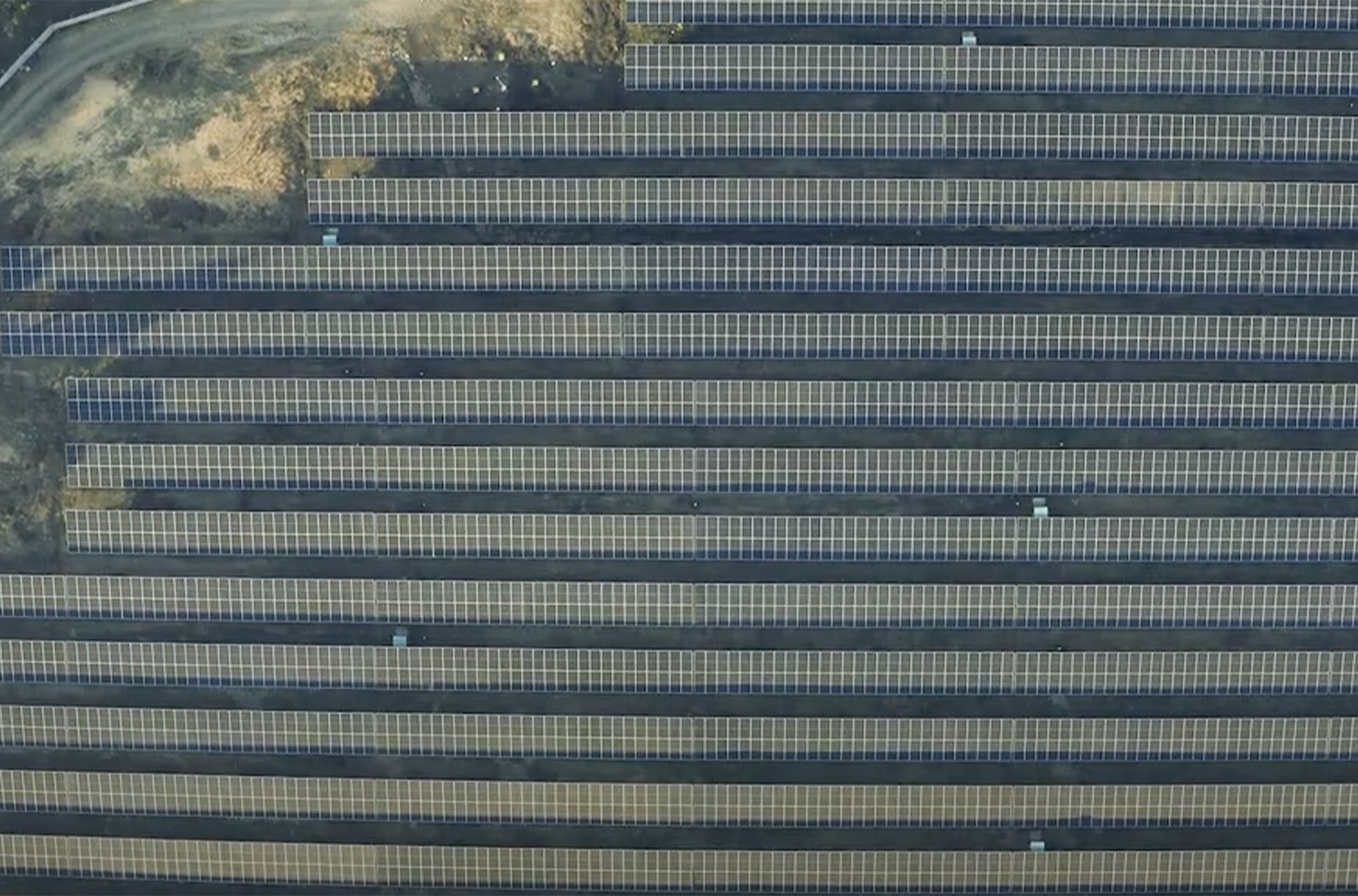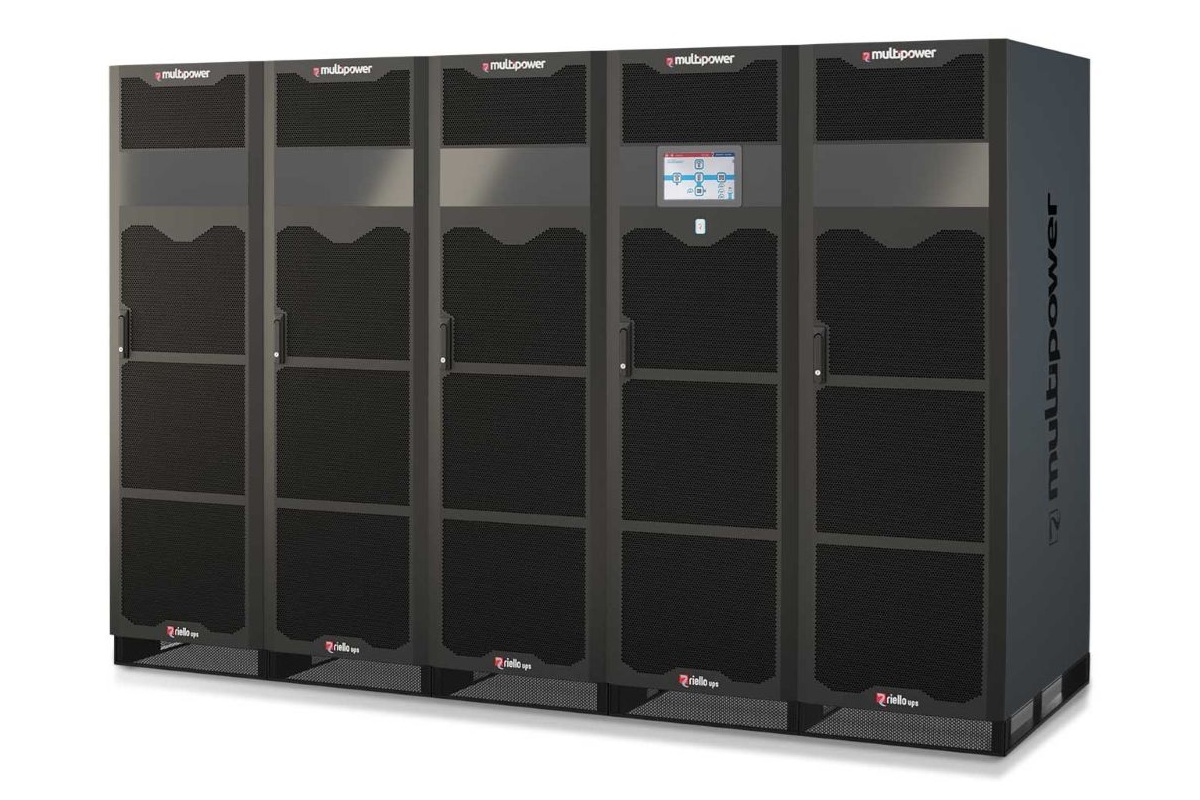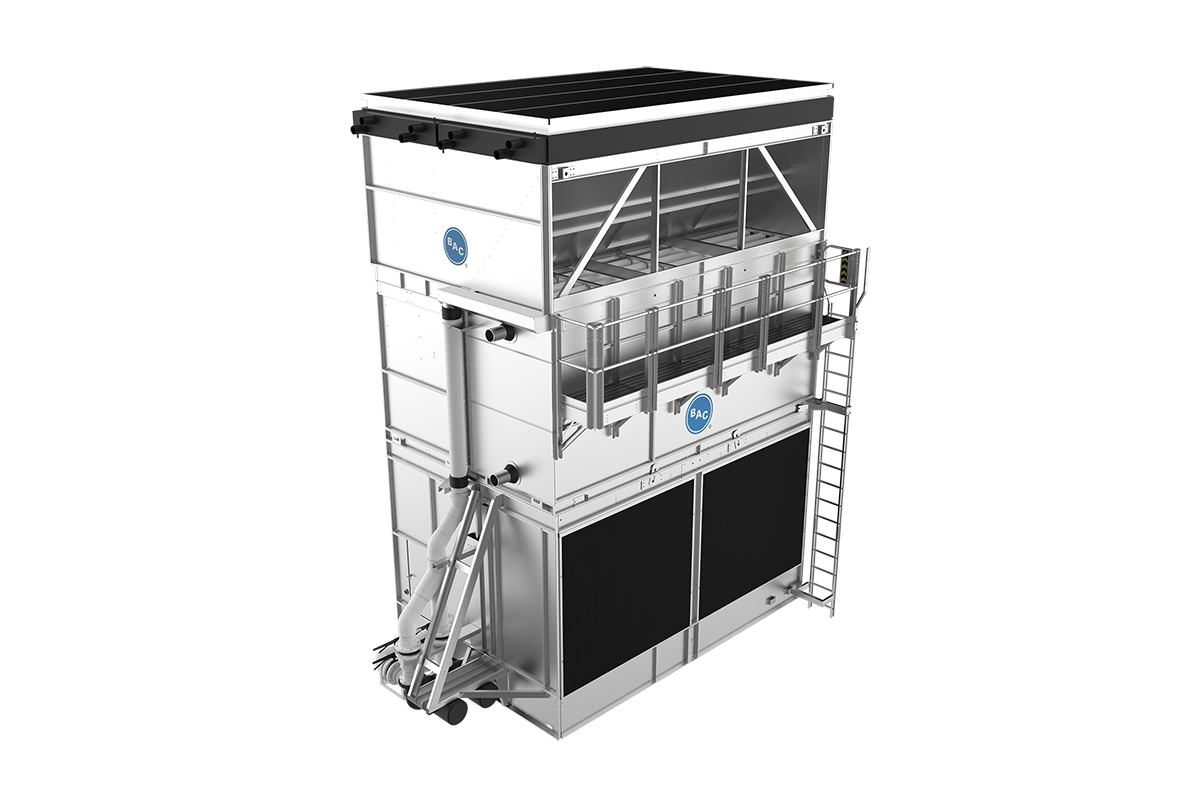Innovations in Data Center Power and Cooling Solutions
Data Centre Infrastructure News & Trends
Data Centres
Innovations in Data Center Power and Cooling Solutions
News
Mission Critical Group acquires DVM Power + Control
Mission Critical Group (MCG), a provider of innovative products specialising in design, manufacturing, delivery and service of electrical system solutions, has announced that it has acquired DVM Manufacturing (DVM Power + Control), a manufacturer of low- and medium-voltage electrical distribution equipment.
The acquisition significantly expands MCG’s manufacturing footprint and service capabilities in electrical systems for data centres, industrial facilities and other mission critical applications.
With 350,000 square feet of production space in Pennsylvania, Georgia, and Connecticut, DVM expands MCG’s footprint to over one million square feet of manufacturing capacity. The acquisition also strengthens MCG’s field services, drives innovation, and enhances technical expertise by adding DVM’s skilled workforce, providing customers with more solutions and stronger support.
DVM designs and produces low- and medium-voltage electrical distribution equipment, including switchboards, switchgear, relay panels, power distribution units (PDUs), bypasses, power/cooling module 'skid' manufacturing and control systems. Its Naugatuck, Connecticut facility specialises in retrofits, breaker rebuilds and switchgear modernisation, further bolstering MCG’s services and power offerings.
“DVM’s expertise advances MCG’s manufacturing and aftermarket services, driving growth and customer satisfaction for our innovative, high-quality solutions,” says Jeff Drees, CEO of Mission Critical Group. “With DVM’s added capacity and technical strengths, we are also expanding our geographic reach, boosting product development and optimising power service offerings to better support data centres and other mission critical environments.”
Robert Ricci, CEO of DVM Power + Control, adds, “This partnership is a natural fit, built on a shared commitment to innovation, excellence and customer value. Having worked with MCG’s leadership for 30 years, I can attest to their deep industry knowledge and strategic expertise. This collaboration expands our resources, enhances engineering capabilities and improves career growth, ensuring a stronger future for our team.”
DVM will operate as a Mission Critical Group Company alongside JTS and Point Eight Power, continuing to elevate MCG’s leadership in electrical system solutions. As part of the transition, Ricci will continue to lead DVM as its President and oversee MCG’s low- and medium-voltage electrical equipment manufacturing.
With five acquisitions in two years, MCG says that this latest addition marks another milestone in its rapid growth, while reinforcing its commitment to innovation and excellence in mission critical solutions.
For more from Mission Critical Group, click here.
Simon Rowley - 25 April 2025
Data Centre Build News & Insights
Data Centres
Innovations in Data Center Power and Cooling Solutions
News
Renewables and Energy: Infrastructure Builds Driving Sustainable Power
2025 ESG Report: Data centre environmental impact
Structure Research has released its latest 2025 Environmental, Social, and Governance (ESG) Report, providing an in-depth look at the environmental footprint of data centre providers and hyperscale platforms.
The report captures sustainability metrics from 26 data centre operators and nine hyperscale cloud platforms, offering a unique snapshot into carbon emissions, energy consumption and water usage across the global infrastructure ecosystem.
The 2025 ESG Report finds that while data centre energy usage continues to rise - now accounting for more than 1.1% of global energy consumption - average carbon emissions per unit of energy consumed are trending downwards, driven by the growing adoption of renewable and carbon-free energy sources. Total energy usage increased from 178.5TWh in 2019 to 310.6TWh in 2024, while emissions intensity fell from 366.9mtCO2e/GWh to 312.7mtCO2e/GWh over the same period.
“Data centres are foundational to the modern digital economy, and that means they carry a growing environmental responsibility,” says Philbert Shih, Managing Director of Structure Research. “What this report shows is that while energy consumption continues to climb, providers are making meaningful progress in efficiency and renewable adoption. The industry is clearly moving in the right direction - but transparency and accountability will be critical as sustainability expectations evolve.”
Key findings from the report
Sustainability progress amid rising demand
· Energy usage by ESG Leaders grew 17.9% over the last five years, while renewable energy consumption increased by 27.9%.
· Hyperscalers now use renewable sources for approximately 91% of their total energy needs; data centre providers reached 62%.
· Carbon-free energy, including nuclear, is emerging as a key part of the data centre energy mix as power constraints grow in Tier 1 markets.
PUE and water efficiency improvements
· Average Power Usage Effectiveness (PUE) for data centre providers declined from 1.44 in 2019 to 1.38 in 2024, while hyperscale PUEs remained at an industry-leading 1.22.
· Data centre water consumption increased by 9.6% over five years, driven by demand for liquid cooling to support AI workloads and higher rack densities.
The report introduces the Structure Research Sustainability Quadrant (SRSQ), a benchmark framework ranking providers based on transparency, operational efficiency and renewable energy usage. The SRSQ aims to encourage better reporting standards and highlight leaders in environmental performance.
Structure Research’s analysis found that ESG reporting across the sector is becoming more common, though significant variation remains in the scope and depth of disclosures. The report emphasises the importance of transparency in environmental reporting and urges providers to include more granular, region-specific data in future disclosures.
The 2025 ESG Report is a tool for hyperscalers, colocation providers, enterprises and policymakers seeking to understand the environmental implications of data centre growth and how industry leaders are responding.
Carly Weller - 10 April 2025
Data Centre Infrastructure News & Trends
Data Centres
Infrastructure Management for Modern Data Centres
Innovations in Data Center Power and Cooling Solutions
Schneider unveils enhanced GenieEvo with 31.5kA fault rating
Schneider Electric has announced the launch of GenieEvo 31.5kA in the UK and Ireland.
GenieEvo is an air insulated medium voltage switchgear offering, with resilience, safety and reliability at its core.
Its higher fault current protection of 31.5kA, up from 25kA in previous iterations, means it reduces the risk of power outages by minimisig the dangers of equipment damage in the event of power overloads or short circuits
GenieEvo is digital in design and comes with Schneider Electric’s EcoCare membership services plan. It incorporates smart Internet of Things (IoT) sensors which transmit data, in real-time, to experts at Schneider Electric’s Connected Services Hub for monitoring and analysis. This enables condition-based monitoring and predictive maintenance which can cut the number of unplanned outages and ensure a more efficient approach to maintaining equipment.
It is particularly suited to those with heavy-duty electrical distribution needs such as Distribution Network Operators (DNOs), data centres and medium to large sites with significant energy requirements. These include industries such as oil and gas, mining and manufacturing, as well as large buildings including airports and hospitals.
GenieEvo key features include:
· A pure air design vacuum switchgear with a high fault current rating of 31.5kA for enhanced resilience, safety and reliability.
· Newly designed C-type bushings which are easy to install offering improved insulation, durability and thermal management.
· Innovative 2000A Busbar CTs ensuring high accuracy in metering and monitoring.
· A-FL switchgear front and side protection for users for Internal Arc Compliance (IAC).
· IoT sensors monitoring thermal, environmental and partial discharge data, 24/7, enabling condition-based and predictive maintenance.
· A compact design which can reduce space requirements by up to 40%. It comes with pre-engineered panels to meet individual requirements and can scale to meet future needs.
“To enable the energy transition, we need to integrate more energy sources to the distribution network, and this creates challenges, particularly for those with significant electricity demands,” says David Hall, Schneider Electric’s Vice President of Power Systems UK&I. “Organisations can’t afford power outages and must take control when it comes to resilience, safety and reliability. They should look at their switchgear as a priority. GenieEvo has been developed in response to market demands, allowing them to do just this.”
Schneider Electric will manufacture the GenieEvo at its Leeds site.
Carly Weller - 10 April 2025
Data Centre Infrastructure News & Trends
Data Centres
Innovations in Data Center Power and Cooling Solutions
News
Riello UPS expands Multi Power2 modular series
Critical power protection specialist, Riello UPS, has announced an extension to its ultra-high efficiency modular range Multi Power2.
The uninterruptible power supply manufacturer adds to its existing 500 kW MP2 UPS with a 300 kW version, along with a trio of 600 kW cabinets. The expansion increases the flexibility of the range, which is aimed at small to medium-sized data centres and other similarly mission critical applications.
The additional units deliver all the series’ key benefits, including ultra-high efficiency of 98.1% in online double conversion mode, risk-free ‘pay as you grow’ scalability, a robust design that eliminates any single point of failure, and hot-swappable 3U 67 kW power modules that ensure downtime-free maintenance.
Multi Power2 incorporates advanced silicon carbide (SiC) semiconductors that significantly reduce energy losses and heat generation, delivering data centre operators robust and reliable performance whilst lowering their operating costs, cooling requirements, and carbon emissions.
The extended MP2 range now incorporates:
• MP2 300 – up to five power modules for a maximum of 300 kW, features bottom cable entry and an integrated manual bypass switch;• MP2 500 – up to eight power modules for a maximum of 500 kW, features top cable entry, an integrated manual bypass switch, and air filters as standard;• MP2 600 – up to nine power modules for a maximum of 600 kW, available with or without switches and a choice of front-to-back or front-to-top ventilation.
Up to four UPS can be installed in parallel, meaning the MP2 can protect up to 2,400 kW in a single system.
As well as the expanded MP2, the complete Multi Power2 range also incorporates the popular Multi Power2 Scalable (M2S) innovation (which comes in 1,000 kW, 1,250 kW and 1,600 kW versions), and is designed with the needs of modern data centres in mind, as it can handle the rapid load fluctuations typically associated with AI load profiles. By connecting four M2S UPS in parallel, it can protect up to 6,400 kW.
Leo Craig, Managing Director of Riello UPS, comments, “With this exciting expansion of the Multi Power range, we are addressing the data centre industry’s growing focus on energy saving practices for a more sustainable future.
“By combining market-leading efficiency of 98.1% and flexibility in terms of power ratings and cabinets with a reduced carbon footprint and total cost of ownership, we are delivering data centres proven results without compromising on power continuity or performance.”
For more from Riello UPS, click here.
Simon Rowley - 4 April 2025
Data Centres
Innovations in Data Center Power and Cooling Solutions
Vertiv unveils scalable power solution, Vertiv PowerDirect Rack
Vertiv has announced the launch of the Vertiv PowerDirect Rack, a 1U high-density 50V DC power system shelf designed to bring resilience to even the most demanding AI and high-performance computing (HPC) environments.
This modular system scales up to 132kW per rack by integrating multiple power shelves, enabling expansion while minimising space requirements. Available globally, Vertiv PowerDirect Rack offers a complete infrastructure power solution, supporting two times the power capacity in the same footprint, compared to alternative solutions.
The Vertiv PowerDirect Rack is designed to help data centres maximise power efficiency and scale with ease. Built for Open Compute Project (OCP) ORv3 High Power Rack (HPR) environments, it delivers high-density power while reducing energy waste and simplifying operations. With flexible AC and HVDC input support, real-time monitoring and modular scalability, the power shelf enables seamless expansion to allow IT teams to meet growing power demands without increasing rack space or complexity, compared to traditional AC uninterruptible power supply (UPS) with separate rectification and power distribution, or lower density DC power shelves.
“Today’s data centres face increasing pressure to deliver more power in less space while supporting the rapid growth of AI and HPC applications,” says Kyle Keeper, Senior Vice President of the Power Business Unit at Vertiv. “Vertiv PowerDirect Rack addresses these challenges with a scalable, energy-efficient DC power design that equips operators with the flexibility to adapt to evolving workload demands and build future-ready infrastructure.”
Built for performance and adaptability, the Vertiv PowerDirect Rack delivers benefits that simplify power management and improve data centre energy efficiency. Key features include:
· Delivers up to 132kW per rack with N+N redundancy, enabling high-density deployments with a scalable, space-saving power architecture.
· Achieves 97.5% peak energy efficiency, minimising power waste, reducing cooling demands and lowering operating costs.
· Supports both AC and HVDC input, for seamless integration into diverse power infrastructures for future-ready data centres.
· Hot-swappable, modular design for uninterrupted operations and effortless scalability as power needs grow.
· Advanced power management and reliability, with built-in safeguards to maintain continuous performance and prevent disruptions.
Carly Weller - 1 April 2025
Data Centre Infrastructure News & Trends
Data Centres
Innovations in Data Center Power and Cooling Solutions
News
Schneider Electric appoints new Senior Vice President for Power business
Schneider Electric, an energy management and automation specialist, has appointed Pablo Ruiz Escribano as the new regional Senior Vice President (SVP) of its Secure Power and Data Centre Business in Europe.
Pablo has been with Schneider Electric for 18 years. Since he first joined as a Key Account Manager in 2007, Pablo has progressed through several leadership positions within the organisation, including roles as Power Products Channel Project Director, Vice President (VP) for Secure Power & Field Services in Iberia, and more recently, as VP for the Global Services Segment. His predecessor, Marc Garner, will move into a new global role as President of Schneider Electric’s Cloud & Service Providers (C&SP) Segment.
In his new role, Pablo will be tasked with leading Schneider Electric’s Secure Power and Data Centre Business across Europe, working with country and zone leaders in BeNe, CEEI, DACH, France, Iberia, Italy, Nordics and UKI to help customers solve the energy, infrastructure and sustainability challenges of AI.
With extensive experience in both regional and global roles, and a strong background in technical sales and customer relations, Pablo is well-equipped to assist Schneider Electric’s European customers as they navigate the opportunities presented by AI.
“I am delighted to begin my role as the new SVP for Schneider Electric’s Secure Power and Data Centre Business in Europe, and more so at such a transformative time for our industry,” says Pablo Ruiz Escribano. “With AI accelerating growth on multiple plains, there’s an unprecedented opportunity to enhance the efficiency, resiliency, and sustainability of the digital infrastructure landscape, and I look forward to working with our customers and partners to seize these opportunities and push the industry forward. I also want to extend my sincerest thanks to Marc Garner for his insights as I take on this new position and I wish him all the best in his next chapter.”
Pablo’s most recent role as Global Services Segment VP saw him responsible for successfully leading Schneider Electric’s Services business. Here, he effectively improved the integration of services strategies and actions within overall segment strategies and account plans. He has also coordinated multi-country, multi-technology strategic accounts throughout the adopt, expand and renew phases, as well as streamlining commercial activities across service zones, ensuring a unified services segment organisation with consistent account management.
As the new SVP for Secure Power and Data Centre Business Europe, Pablo will be responsible for delivering Schneider Electric’s end-to-end AI-ready data centre solutions across the region, helping customers to bend the energy curve of AI, and accelerating the decarbonisation of their large-scale energy and digital infrastructure systems.
He will also work with key stakeholders across Schneider Electric’s channel partner ecosystem including its EcoXpert, Alliance Partners, and its AI Ecosystem partners.
New Global C&SP President
Having served 20 years at Schneider Electric Marc Garner now takes up his first global role for the company as Cloud & Service Providers (C&SP) Segment President, where he will be responsible for helping the organisations’ AI cloud, colocation and hyperscale customers build-out and decarbonise their cloud and high-density AI data centre systems on a global scale.
Marc comments, "As data consumption soars and AI accelerates demand for high-density infrastructure, the data centre industry has a huge opportunity to lead the charge in efficiency and sustainability. It has been a fantastic opportunity to lead a team who has been able to achieve an unprecedented rate of growth for Schneider Electric here in Europe by helping our customers shape a resilient, efficient and AI-ready data centre landscape. I wish Pablo the best of luck in his new role as SVP for Secure Power and Data Centre Europe and extend a huge thank you to my team for their support during the last two years.”
Pankaj Sharma, EVP Secure Power & Data Centres and Global Services Businesses, adds, “At Schneider Electric, we are committed to driving the future of digital infrastructure through innovation, sustainability, and strategic leadership. Pablo’s extensive experience and deep industry expertise make him the ideal leader to continue advancing our Secure Power and Data Centre Business in Europe. His leadership will be instrumental in helping our customers navigate the opportunities AI presents.
“I would also like to extend our gratitude to Marc for his exceptional leadership in Europe, where he has played a crucial role in driving growth and expanding our capabilities. As he steps into his first global role as Cloud & Service Providers Segment President, we are confident that his vision and expertise will further strengthen Schneider Electric’s position in the digital infrastructure space.”
Both appointments will continue to report into Pankaj Sharma and are with immediate effect.
For more from Schneider Electric, click here.
Simon Rowley - 6 March 2025
Data Centre Infrastructure News & Trends
Data Centres
Events
Innovations in Data Center Power and Cooling Solutions
News
Centiel to demonstrate AI workload-ready UPS at DCW
UPS manufacturer, Centiel, will showcase its multi-award winning, true modular UPS StratusPower at Data Centre World, taking place at ExCel London on 12-13 March.
StratusPower is currently being utilised in data centres around the globe and, in particular, has been designed to deal with AI workloads and the fast-approaching power demand.
Louis McGarry, Sales and Marketing Director, Centiel, explains, “AI is creating heavy demand for power protection. We are working on projects that require multi megawatts of power for data centres and AI data processing facilities that rely on power protection equipment that can be scaled-up and rapidly deployed. While efficiency and sustainability in UPS systems is now a given, customer choice now comes down to quality but also how big and how quickly can UPS systems be scaled and deployed.
“Our factory in Switzerland produces around 1,000 UPS modules per month, and Centiel offers rapid delivery worldwide to protect the power for data centres and the growth in AI across the globe. Our UPS is scalable to fulfil the capabilities of any facility on day one, or grow as the data centre expands.
“In addition, StratusPower offers “9 nines” (99.9999999%) availability to effectively eliminate system downtime; class leading 97.6% on-line efficiency to minimise running costs; true 'hot swap' modules to eliminate human error in operation; plus long-life components to improve sustainability.”
StratusPower is also known for is dynamic load handling and reliable uptime for unpredictable, high-intensity AI demands. With its impressive overload capacity of up to 150% for 60 seconds, it offers unmatched performance. In relation to grid resilience, StratusPower absorbs voltage fluctuations with an extended input range, in addition to operating flawlessly under elevated temperature conditions.
The three-phase true modular UPS StratusPower now covers a power range from 50 to 1,875kW in one cabinet and can be paralleled for 3,750kW of uninterrupted, clean power, which is ideal for data centres.
Louis continues, “To discuss your data centre’s needs for a fully scalable, efficient, reliable UPS system, and to ensure your AI infrastructure is future-proofed, come and see us at Data Centre World. Our expert team of trusted advisors will be on hand to discuss power availability for AI facilities and how best to maximise uptime for critical power protection.”
Centiel now protects critical loads for data centres and comms rooms in over 100 countries across five continents. The company will be located at booth DC232 at the upcoming Data Centre World event in London.
For more from Centiel, click here.
Simon Rowley - 19 February 2025
Data Centres
Innovations in Data Center Power and Cooling Solutions
News
Sustainable Infrastructure: Building Resilient, Low-Carbon Projects
CtrlS Datacenters launches GreenVolt1 solar farm
CtrlS Datacenters has unveiled its captive GreenVolt1 solar farm in India. Phase I of the solar farm with a capacity of 62.5MWp already went live in June 2024, while Phase II with an additional capacity of 62.5MWp is under implementation. CtrlS spent over a year in R&D to optimise the project and comply with all the regulations.
With ambitious plans to develop over GW of renewable energy capacity by 2030 across India, including notable ongoing investments in Maharashtra, Uttar Pradesh and Karnataka, CtrlS is dedicated to reducing carbon emissions and promoting renewable energy adoption.
Sridhar Pinnapureddy, Founder and CEO, CtrlS Datacenters says, “GreenVolt 1 will power CtrlS data centres both existing and upcoming, which we believe will set a new benchmark in the Indian data centre industry. We are committed to scaling our DC capacity to over 1GW and our GreenVolt solar farm is a major step towards doing that sustainably.”
As part of the $2 billion investment plan announced by CtrlS earlier, the company has set its eyes to achieve net zero goal by 2040. To fulfil that goal, CtrlS is investing in solar projects across India.
“GreenVolt1 is a giant leap with an intent to make bigger strides and expand GreenVolt projects across India. This is part of our journey towards sustainability, guided by the idea of responsible growth. We are now closer than ever before to the big picture- Making CtrlS completely carbon neutral by 2040,” Sridhar adds.
Located in Nagpur, Maharashtra, the 125 Wp solar farm will power 60% of CtrlS’ Mumbai Datacenter Campus with clean energy, further solidifying the company’s green credentials. With this, enterprises hosted at CtrlS Mumbai Datacenter Campus can achieve their Sustainable Development Goals (SDG) by offsetting their carbon footprint – in line with the brand mission of helping them take control of digital transformation seamlessly, securely and sustainably.
CtrlS GreenVolt 1 is spread over 340 acres of land. Phase 1 of the project, which went live in June 2024, powers 30% of CtrlS Mumbai Datacenter Campus with solar energy, to be further scaled to 60% with the completion of Phase 2, adding another 62.5 MWP of solar capacity.
Key differentiators
CtrlS’ GreenVolt1 solar farm has a geographic advantage. Most solar farms are isolated in remote areas, but this site is located along the Mumbai-Kolkata highway, ensuring seamless connectivity. It’s a rare tabletop land, ensuring optimal utilisation of land area, evenly laid-out solar panels and cost-savings.
While most solar farms in India use P-type panels, CtrlS GreenVolt 1 uses advanced N-type panels, the most efficient solar panels, delivering more energy with reduced land requirements and ensuring high efficiency in energy production. In phase 1, the company has installed 107,912 solar panels.
CtrlS is on a mission to build over 1GW of solar capacity by 2030, which will power the company’s data centre footprint of over 1,000MW by 2030.
Carly Weller - 6 February 2025
Data Centres
Innovations in Data Center Power and Cooling Solutions
News
Riello UPS set for Data Centre World 2025
Critical power protection specialist, Riello UPS, is set to showcase its comprehensive range of data centre products and innovations at the industry’s largest trade event of the year.
The uninterruptible power supply manufacturer is once again exhibiting at Data Centre World, which returns to ExCeL London on 12-13 March.
Members of the Riello UPS team will be on hand at stand DC340 throughout the two-day event to showcase demo versions of several of its data centre UPS ranges, including the modular Multi Power and Multi Power2, the evolution of its modular offering capable of ultra-high efficiency of up to 98.1%.
They will also be on hand to outline the business’s range of UPS maintenance plans, comprehensive data centre UPS design and consultancy services, and a growing library of certified CPD content for data centre consultants and engineers.
Data Centre World is recognised as the largest global gathering of data centre professionals, and this year’s event is once again staged as part of the wider Tech Show London, giving attendees the opportunity to explore four other co-hosted events (Cloud Expo Europe, DevOps Live, Cloud & Cyber Security Expo, and Big Data & AI World).
DCW 2025 will host more than 300 exhibitors from across the industry, along with a packed conference programme featuring over 200 hours of seminars, discussions, and speakers.
Key themes for this year’s show include:
• Redefining Data Centres: Sustainability, Resiliency, and Tech Innovation• Navigating the Regulation Landscape• Protecting the Data Centre: Security in the Modern World• Modernising Data Centre Infrastructures: Edge, Colocation, Hyperscales• The Impact of AI on Data Centres• Cultivating a People-Focused Data Centre Workforce Culture• Financing Data Centres: The Investor’s Perspective.
Leo Craig, Managing Director of Riello UPS, comments, “Data Centre World is always our most anticipated show of the year and we can’t wait to showcase our proven range of data centre solutions again at the ExCeL.
“This year’s event is the first since our successful completion of the company merger, bringing together all the wholly owned UK subsidiaries of Riello UPS under one strong, unified brand. We’re looking forward to showing how integrating these strengths, expertise, and resources into a single entity will enable us to provide enhanced product and service offering, along with expanded customer support.”
For more from Riello UPS, click here.
Simon Rowley - 5 February 2025
Data Centre Infrastructure News & Trends
Innovations in Data Center Power and Cooling Solutions
News
Sustainable Infrastructure: Building Resilient, Low-Carbon Projects
Feature - Sustainable data centre cooling
In many data centres, water-cooled chillers are paired with an open or closed-circuit cooling tower for heat rejection. Other options include dry coolers, hybrid fluid coolers and adiabatic fluid coolers. It is beneficial to evaluate all heat rejection options to optimise energy and water consumption.
Baltimore Aircoil Company (BAC) was approached by a high-performance computing customer with 160MW operating power to provide a more sustainable cooling solution. They had previously used open cooling towers with water-cooled chillers, so BAC worked with the customer to understand its major challenges and needs.
The following were identified as critical priorities:
- Minimise water usage while balancing energy consumption to support customer sustainability efforts- Provide cooling for an increasing heat load in a smaller footprint- Meet system water temperature requirements without chillers at high loads and varying outside conditions
BAC analysed the IT capacity, space requirements, operating power, and location weather data, and then evaluated fully evaporative, hybrid, and adiabatic solutions. Based on the analysis, BAC recommended a chillerless system utilising the HXVTM hybrid cooler. The HXV’s packaged evaporative and dry cooling features offered the water saving and energy efficient solution the customer desired. The factory assembled unit also allowed for easier maintenance and serviceability for the operations team. They were able to easily access the cold-water basin, prime surface coil and drive system due to the crossflow design, large doors, and internal access platforms. Additionally, the customer could perform faster inspections of the spray distribution system while the unit was in operation.
The HXV Hybrid Cooler not only addressed all of the customer’s challenges and needs, but it also reduced annual energy costs and improved system efficiency. The HXV Hybrid Cooler helped achieve an estimated power usage effectiveness (PUE) of 1.136.
The HXV incorporates three modes of operation. It has the benefits of evaporative, adiabatic, and dry cooling in a water saving and energy efficient solution. It maintains peak system performance for a variety of applications where water is scarce, water costs are high, uptime is critical, or plume is a concern. Furthermore, it is an ideal solution where space is limited. The HXV hybrid cooler offers the following benefits:
- Up to 70% water savings compared to an open cooling tower due to a high dry switch point and more dry operating hours- Year-round 'sensible cooling' with the dry coil to maximise water savings- On average, 25% water savings even on a design day through sensible cooling- Up to 60% lower energy costs compared to air cooled systems due to evaporative cooling and BAC’s innovative combined flow design- Increased operational and layout flexibility with balanced water and energy savings- Highest reliability, and water saver mode eliminates plume abatement- Up to 25% less maintenance than traditional fluid coolers due to dry operation and crossflow design- Up to 70% chemical savings due to dry operation
In this installation, the HXV Hybrid Cooler met the customer’s need for a reasonable first cost while significantly reducing both water consumption and operating costs. The HXV heat rejection benefits compared to open cooling towers with water-cooled chillers are:
- 71% reduction in annual WUE- 86% reduction in installed peak power- 52% reduction in annual operating cost (energy and water)
For more from BAC, click here.
Simon Rowley - 2 January 2025

Head office & Accounts:
Suite 14, 6-8 Revenge Road, Lordswood
Kent ME5 8UD
T: +44 (0)1634 673163
F: +44 (0)1634 673173

